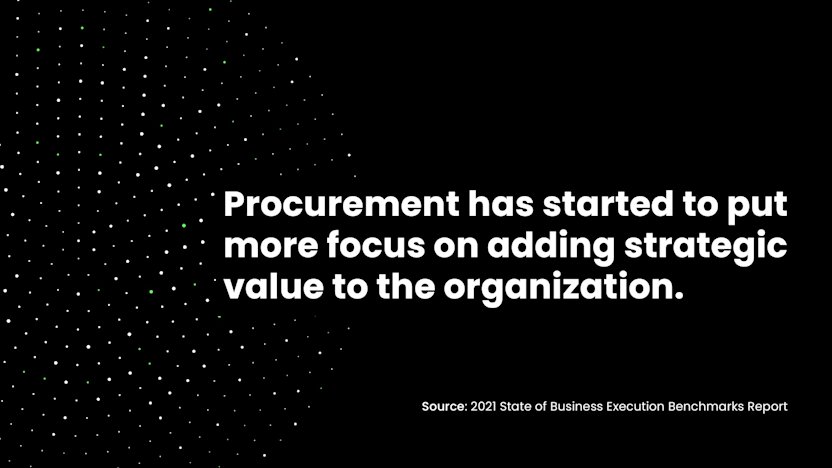
The State of Procurement Execution: Where Teams are Falling Short — and Why
Once seen purely as a cost-saving department, Procurement has evolved in recent years to become a truly strategic function. One that organizations in all industries depend on to boost profitability, accelerate time to market, preemptively mitigate risk, and ultimately ensure customer satisfaction.
But most Procurement functions simply aren’t there yet. Despite multimillion-dollar investments in e-procurement suites, supplier networks, spend analytics, eSourcing, and e-invoicing, productivity and output are still running far below expectations.
Process inefficiencies like inaccurate lead times, maverick buying, price and quantity changes, or early deliveries are all-too familiar to most Procurement functions — and can prevent even the best run companies from working at their full execution capacity.
So what exactly is getting in their way? What are the obstacles Procurement has to overcome? And what makes the difference between the best-in-class organizations and those falling behind?
We surveyed more than 2,000 leaders across six countries, eight industries, and four lines of business to establish precisely this. The results are compiled in The State of Business Execution Report, a benchmark analysis that accurately represents the state of today’s business execution across Procurement, Accounts Payable, Order Management, and Accounts Receivable.
Here’s a sneak peek at what we learned about Procurement.
Takeaway #1: Priorities are changing

While maintaining the ‘five rights’ of Procurement — delivering the right goods and services, at the right time, to the right places, and at the right price — is still a high priority, the function has started to put more focus on adding strategic value to the organization, working with partners to drive innovation, and proactively anticipating supply chain shifts.
This transformation hasn’t happened by coincidence. The organizations that have got Procurement right have dedicated significant resources to doing so.
After all, building a reliable supplier portfolio, ensuring consistent supply at the right cost (and in unpredictable circumstances), and adapting to changing business needs are all things that require in-depth insight. This has never been more true than in the wake of COVID-19, with mass supply chain disruption and uncertain markets throwing a spanner in the works of any previously well-oiled Procurement function. In this environment, real-time insights, data science, and automation are all vital weapons in Procurement’s armory.
Takeaway #2: Where the gaps lie

This evolution of Procurement into a data-driven, strategic function is great in theory. But in a lot of organizations, that transformation is being hindered by three significant obstacles. The professionals we surveyed listed a lack of executive sponsorship (41.1%), a fragmented data landscape (40.7%), and broken or inefficient processes (39.3%) as their major barriers to success.
Unless these areas are addressed, the gap between what Procurement is expected to do and what it can do will remain indefinitely. And we can see its effects if we compare the performance of the average Procurement teams to those that are deemed ‘best-in-class’. For instance, while best-in-class organizations receive supplier deliveries on time 83% of the time, this only happens for the average organization around half of the time.
Similarly, the average Procurement organization only influences 47% of its total spend. Whereas best-in-class organizations — those that are already playing a more strategic role in the business — influence 75% of total spend.
Takeaway #3: A multimillion-dollar opportunity

The Procurement teams we surveyed are pulling out all the stops to reduce supplier lead times, slash cycle times, and increase stakeholder satisfaction. But unfortunately, held back by rigid and fragmented systems, many are fighting an uphill battle.
And they’re fighting it in the face of mounting pressures, too. Almost 60% of the Procurement professionals we spoke to said their customers were starting to expect even shorter delivery times.
If organizations want Procurement to meet these ever-growing targets, and deliver true strategic value, they need to close these execution gaps. And the rewards in doing so can be huge. We calculated that by maximizing the capacity of their procurement processes, the average organization stands to save an enormous $40,950,000.
Understand the state of business execution in Procurement
To get the full picture — including in-depth analysis of KPI performance across hundreds of organizations just like yours — read the 2021 State of Business Execution Benchmark Report in full.



